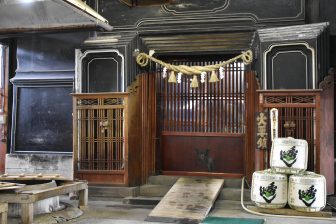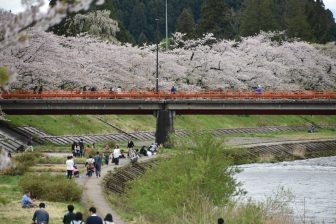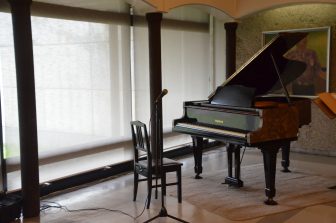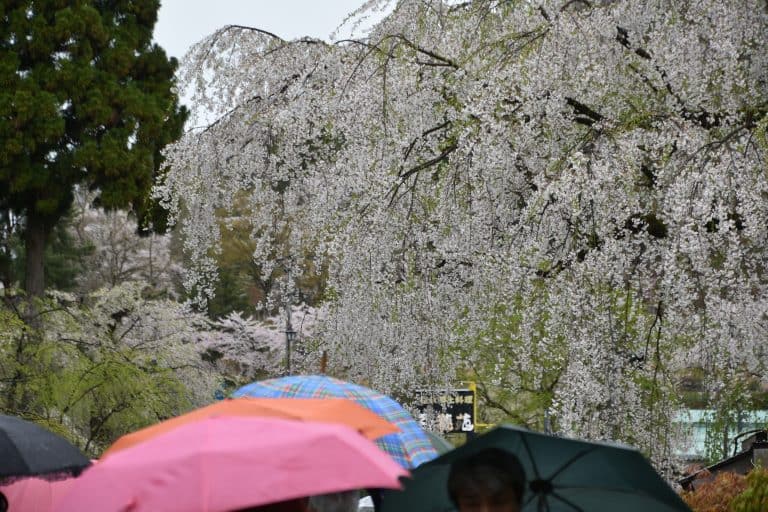
[ Apr.2019 ] On the second night of our family holiday in Akita prefecture, Japan, we stayed in Kakunodate, where there is an old townscape left as it once was.
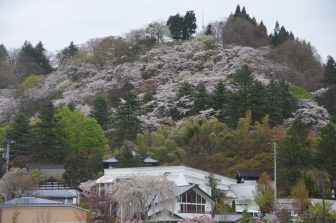
According to the guide map I got locally, the town of Kakunodate was built in 1620 by Yoshikatsu Ashina, a feudal lord who ruled this region.
The northern most part of the town was decided to be the Furushiroyama mountain and from there they made three main streets to build the town.
There used to be another town but it was located on the other side of Furushiroyama and because they had some disasters of floods and fires, as well as the fact that it had become too small, they decided to make a new town.
In 1620, there were 250 Samurai houses and 420 other houses in Kakunodate.
Unfortunately, the Ashina family’s line ended in 1656 and after that, the Satake-Kita family ruled this area.
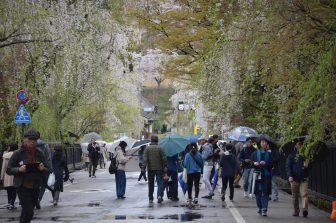
The guide map says “the Samurai district in particular, with its narrow streets and corners, has remained unchanged for over 400 years”.
It is a long and narrow town from north to south and the place called Hiyoke, in the square of city hall, is the centre of the town.
The north of that is the Samurai area and the south is the area of tradesmen and artisans.
We parked our car in the car park at the foot of Furushiroyama, which was full of cherry blossoms, and walked around the Samurai district.
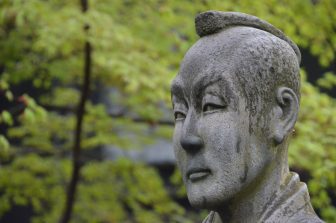
Although the rain persisted throughout the day, there were many people walking with their umbrellas, as this is one of the main tourist attractions in this area.
Apparently, there are 6 Samurai houses open to the public and we went to one of them, called Aoyagi, which was described in our guidebook as ‘the most established spot for tourists’, and cost 500 yen (£3.65, €4.10, $4.60).
Aoyagi is the family with about 400 years of history and within the total area of almost 10,000 square metres, there are old buildings and they are now museums such as The Armory, The Akita Folk Museum and so on.
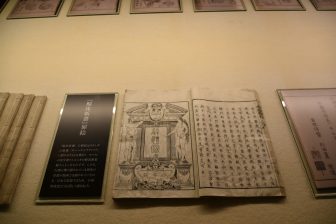
There was a bust of a man with a bit of a peculiar face in the garden, which drew my eyes.
He was not Mr. Aoyagi, but someone called Naotake Odano.
Odano was a local Samurai and a remote relative of the Aoyagi family, who illustrated the human body in “Kaitai Shinsho”, the first translation of a Dutch book on anatomy, published in 1774.
In the Kaitai Shinsho gallery nearby, we could see the copy of the first edition of Kaitai Shinsho.
There is also a Kimono studio, which dresses you up in Kimono.
I love this kind of service, so my husband and I dressed up in Kimono here (2,000 yen per person) and took many photos.
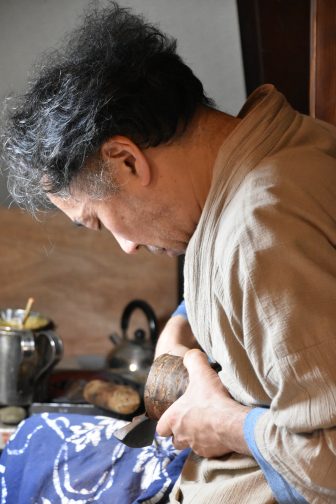
The person in this studio was a non-Japanese Asian woman and she was good at dressing me, but she did not know well how to dress a man.
Our family members tried to help her and after a big fuss, in the end he looked OK, so we were satisfied.
In the Akita Folk Museum, we could see a demonstration of the cherry-bark handicraft, which is the traditional local craft.
After this visit, we kept walking for a while and saw quite a few cherry trees, whose blossoms were lovely against the black walls of Samurai houses.
Although it was late April, the cold rain kept pouring and although I was wearing my light down jacket, it was really cold.

